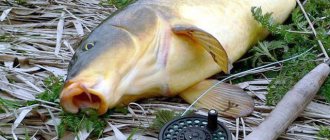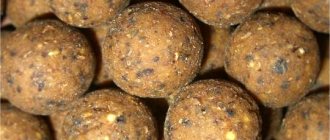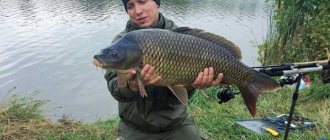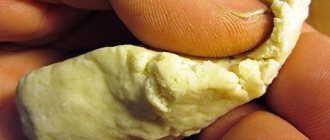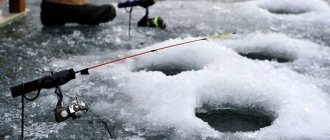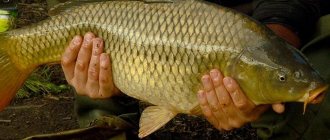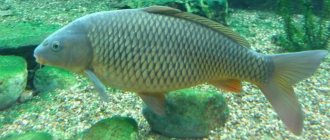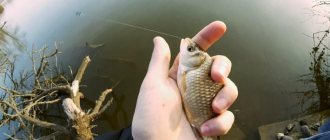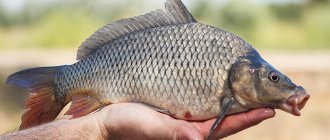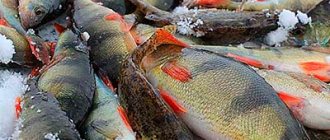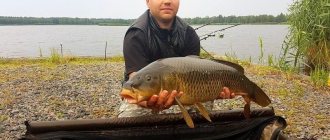In this article we will reveal the secrets of successful carp fishing, teach you how to determine the location of the carp, its seasonal behavior, choose the right gear and bait, tell interesting facts about this freshwater inhabitant of Israeli reservoirs and gastronomic features that exist in various countries.
Content
- 1. General description of fish
- 2. Distribution and habitats of carp in Israel
- 3. Age and size
- 4. Lifestyle of carp
- 4.1. Reproduction - time and characteristics of spawning
- 4.2. Diet - what to eat
- 5.1. Biting calendar - what time of year and day does carp bite best?
- 5.2. What weather is the best time to bite?
- 5.3. What are the best places to catch carp?
- 5.4. What gear is best to fish with?
- 5.5. Baits for carp fishing in Israel
- 5.6. What baits and baits do carp bite on?
- 5.6.1. Animal nozzles
- 5.6.2. Plant attachments
- 5.6.3. Artificial baits
How to find a cool place.
There can be legends about cool places on a single body of water. Before you start fishing for carp on a pond or river you are not familiar with, do some scouting for cool places. Once upon a time I came across this information and I can easily share it with you. Try asking local fishermen where you can find a fishing spot, about the habits of carp in a given body of water, about their preferences for bait.
Perhaps you will be lucky and you will be able to obtain valuable information.
But as practice shows, not all carp anglers easily share such data. You may find information about carp useful, here is a link to an article on where to look for and how to catch carp. Well, if there is no chance of getting information from the local population for one reason or another, we will start from scientific observations.
When you arrive at the intended place for carp fishing, do not rush to settle down in the place you like. Yes, it may be convenient for you, but are there any fish here? Even the most favorite places where carp are constantly caught fail over time. This happens because the constant presence of a person in the same place scares away the fish. Walk along the perimeter of the reservoir and explore new fishing spots. You need to look for places where carp feed or jump out of the water in the excitement of the game. Try to look for signs of the presence of funnel fish, splashes of water.
It happens that if you walk around a body of water from all sides, you will not be able to find clear signs of the presence of fish. In such cases, you will have to choose a place based on external signs. Mostly novice fishermen, seeing a large crowd of fishermen, try to find a place closer to them. Forgetting that carp are shy fish, and a large accumulation of fishing lines in the water, splashes, negotiations between fishermen easily scares off the noble fish and it moves further away from the noise. Try to find a place where there is the smallest concentration of fishermen, or better yet, if there are none there at all.
Let's look at several options for carp habitat. Snag is one of the most favorite habitats

carp Here is a food base, shelter from predators and, in fact, a home. Not many anglers dare to fish in snags. Because there is a high probability of being left without gear. But if you show extreme caution when fishing for a trophy and don’t let the fish take the tackle under the snags, then you have every chance of staying with the catch and the tackle.
The next habitat for good trophy carp are overhanging trees over the water. Thus, trees create shade and food supply for fish, these are all possible bugs, worms, midges, and mosquitoes. The majority of fishermen neglect such places for the same reason of being left without gear even at the stage of casting a fishing rod. In order to fish under trees without loss, gear that is not too long is required. Based on my own observations, I will say that the bite is most attractive under willows and fruit trees. But Oak or Hornbeam are no help to us in catching good trophy carp, since when they rot, Oak leaves emit an unpleasant odor, which carp really don’t like.
Places with vigorous aquatic vegetation. Quite a favorite habitat for all kinds of fish, again, food and an abundance of oxygen released by aquatic grass. And again, the probability of being left without gear is very high. Still, popular wisdom says the truth: “You can’t pull a fish out of a pond without difficulty.” When fishing at the very edge of the grass or finding a suitable window right in it, you can catch on to the stems, and a large trophy will 100% rush into the very depths of the water grove at the first successful hook.
Carp lifestyle
Living conditions:
- water temperature not lower than 14 degrees;
- Still water;
- water with a quiet or small current;
- clay bottom with small silt deposits.
Carp behavior:
- large (adult) carp are solitary, feed on the move, not staying in one place, so they are difficult to catch;
- young animals - stay in a group, feed from one area, move less;
- in muddy areas, at depth, carp linger longer in cool weather, but in rocky (clay) shallow water they do not linger.
4.1 Reproduction - time and characteristics of spawning
Spawns in shallow waters with dense vegetation at temperatures of 18 degrees and above in the morning. During spawning, he loses his vigilance and is vulnerable.
4.2 Diet - what to eat
- shellfish;
- crustaceans;
- worms;
- larvae;
- insects;
- seaweed;
- plankton, etc.
Fishing for carp from the surface with floating baits
Fishing for carp from the surface can be no less interesting and productive than fishing with a rod or boilies, and in some cases much more effective. The main difference is that there is no point in waiting for fish in one place; you need to look for it, track it, and quickly move around the reservoir.
Therefore, catching carp from the surface of the water is reminiscent of spinning fishing. In addition, finding the target of the hunt in direct visibility and visualizing the bite adds interest to this type of fishing.
- Carp feeding from the surface of the water is not a rare occurrence. But this doesn't happen all the time. On a summer morning, carp usually feed near the shore, then you can use special bait to lift it into the upper layers of the water. It is important that the reservoir is not subject to great fishing pressure. There should be places on it where the fish would feel natural.
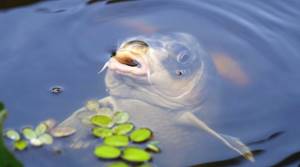
What you need to catch carp from the surface
Polarized sunglasses will help you track carp. This simple device greatly expands the fisherman’s capabilities. If you look at a pond from a height wearing these glasses, for example from a high cliff or climbing a tree, you can look under the water to a shallow depth and see fish that are usually impossible to see.
To catch carp from the surface, you need maximum mobility and stealth. You need to move as silently and smoothly as possible, without sudden movements, sneaking, and make maximum use of natural shelters. Clothes are only camouflage. It is enough to have with you
- polarized glasses,
- rod,
- landing net,
- supply of bait and bait,
- some spare equipment.
How polarized glasses work and how to see fish underwater
Fishing tactics
There are two possible tactics.
- You walk around the pond further and further, tracking down the carp in the upper layers of the water. Having noticed it, feed it and fish the area until the carp leaves.
- The second option is to pre-cast bait wherever you think carp may appear. After which the places are periodically examined and fished if the carp has risen to try your bait.
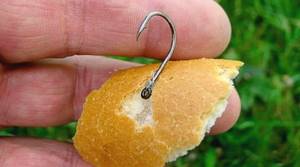
Discreet equipment
All fishing is based on stealth and silence. Therefore, the best equipment for carp fishing is simply a fishing line with a hook. Casting a floating bait in this case will create a minimum of noise. But it will be very close, because the main line should be thick monofilament, designed to catch carp.
And the carp will not always be so close to the shore. Therefore, in most cases, in order to increase the casting distance, you will have to use a sinker-float. It is better to use a transparent ball that is half filled with water.
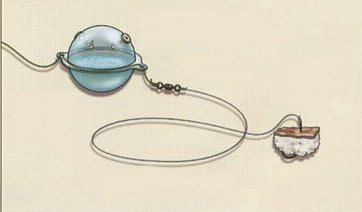
Several different snap-ins
It is important to stock up on several floats of different sizes in order to be able to quickly use the smallest float that would provide the required casting distance, but would create a minimum of noise.
It is advisable to place all floats in advance on short, but very strong fishing lines, with snap hooks at the ends.
A swivel is installed at the end of the main line. A float is attached to it. A leash is attached to the float carabiner. This design makes it possible to quickly adapt the tackle to specific casting conditions. At close distances, the float can be removed from the rig altogether. Also, rigidly tying the float to the leash greatly facilitates self-hatching of the carp. A fluorocarbon leash with a length of at least a meter is used.
Catching carp on a crust of bread from the surface of the water in a baited place - how to catch, what gear to use...
Casting bait with flight
If you see a carp near the surface, then under no circumstances should you throw it directly into the place where it is located. And you don’t even need to throw closer to the fish, because this can cause the school to dive or go to another place. Better to take a flight.
If there is wind and a pronounced surface current, then you need to take them into account and cast slightly opposite the wind, so that the bait then drifts in the right direction. After casting, the bait is very slowly pulled by the reel into the area where the carp is located and is carried there by the wave.
Also, if the bait passed the fishing zone and there was no bite, then you should not rush to remove it from the water in order to quickly start a new retrieve. You need to let the bait float away and only then recast.
The position of the bait and float must be monitored very carefully. The bite is always unexpected. It is better to reel in the fishing line in a timely manner so that you can hook it at any time.
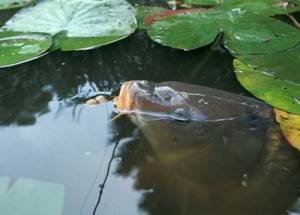
Nozzle and bait
The attachment is a crust of bread soaked in dip, lavash. There are also special mixtures for preparing floating baits, which is also quite good. The attachment can be either on a hook or on a hair. There can be many combinations of attachments on the hair, including floating boilies and corn. The hook can be reinforced by gluing a piece of cork to it. In this case, the carp can take an empty hook, only due to one float-cork.
Groundbait - the same bait, but in much smaller pieces, as well as hemp and corn. To cast bait you will have to use a slingshot. It is necessary to supplement the fish during the fishing process. If you are lucky enough to catch a carp, then after you take it ashore, you should immediately feed it.
Perhaps this will keep the flock in place. You should never rush to cast a fishing rod. It is better to whet the fish’s appetite with additional food, and only after the carp regularly begins to take food from the top, serve the bait, as was said, away from the fattening fish, and then move it to the fishing zone.
Interesting, unusual, funny facts about fish
You can learn about the history of the appearance of carp in one of the encyclopedic sources https://ru.vlab.wikia.com/wiki/Carp
To gain 1 kg of weight, a carp needs to consume 2.5 – 4.5 kg of food. The fry are capable of gaining up to a kilogram in weight within a year.
In 1711, the largest carp was caught, weighing 69.765 kg, and in the 19th century a catch of 69.615 kg was recorded. In 1985 - 28 kg (Spain) and more than a meter long.
Has more than 15 thousand bones.
In the spring, the carp gets rid of the parasites that have settled in it by rubbing against the walls of a dug hole in the clay bottom.
Underwater carps build a shelter for themselves, which is a labyrinth of plants and algae.
Are carp always cautious and over/suspicious? LIE!
I know that many carp anglers consider their favorite fish to be a very cautious fish. However, my practical experience indicates that the behavior of carp living in one of the reservoirs can be very different from the behavior of fish living in another. That is, in some places they can really treat you cautiously, keeping a safe distance, but in others they can be overly curious and even friendly!

In some lakes and ponds, carp are so shy and suspicious that you will never see them with your own eyes. As soon as you get within 10 meters of them, you will notice only a cloud of “turbulent” silt and nothing else. At the same time, carp are one of the fish species that divers trust more than any other. By nature, they are very inquisitive creatures. They are so curious that often I don’t even look for them when I dive. The carp find me themselves and “follow” me everywhere, like dolphins. At the same time, even my camera does not alarm them. Moreover, these “friends” even calmly fed next to me.
Interesting videos about carp fish
An interesting, bright twenty-minute video filmed underwater about the behavior of carp when meeting bait, its rapid and greedy absorption.
A useful educational video for novice anglers and not only about one of the methods of catching carp with bread
Detailed video instructions on finding a fishing spot and marking secrets, presented by one of the Russian fishermen
How does perch bite on a spinner and a balance beam?
First underwater video filming. Underwater video shooting in March. Volga. Camera SJ4000 (For those interested, mounting on a PVC pipe with loading). The fish is absolutely not afraid of foreign objects and noises. I made some interesting conclusions for myself: – You need to change the type of game with a balancer more often – Play spinners at a lower level. – The more fish there are, the more actively they bite – You need to remove the fish from the balancer faster and throw the bait into the water faster – otherwise interest will disappear after a long pause. An interesting point - at 8:35 and 19:48 shooting, when lowering/ascending the camera under the water, a school of topwater fish is visible, which was accompanied by a perch.
Comments under the video
Natalya Lapchik
What am I doing here? I have a working day, I’m a girl, why do I need to catch perch with a lure? And I’m also rooting for the fisherman... The guy is a stranger, he’s sitting in the cold, he drilled a hole, it must have been hard to drill... I won’t even eat this fish. 23 minutes of life... But overall it’s interesting, thank you)
letchik7
+Natalia Lapchik Sorry for making you worry. I would like to inform you that it is not cold to sit - the suit is branded, and in March it is no longer freezing; the knives are sharpened - the ice is drilled well. Half the fish were released. The mood is great - the movie was successfully filmed) Yes, and the girls write letters to strangers))) This is generally wonderful)
Underwater filming of carp
The most useful links about fish
https://carpfishing-media.com/2015/12/12/carpfishing-v-israel-andrei-mazlin/ — Interesting article about the features of carp fishing in Israel;
https://www.fishinginisrael.com/t4790-topic - Information about the baits used by one of the experienced fishermen, described on one of the famous forums about fishing in Israel;
https://www.fishinginisrael.com/t7376-topic - Detailed instructions on marking and preparing a marker at home, outlined by an angler on a forum about fishing in Israel;
https://moya-rybalka.ru/rybalka-na-karpa/ — An article from a Russian fisherman about carp fishing, its habitats, methods of fishing and using bait;
https://animalreader.ru/chto-nam-izvestno-o-karpe.html - Interesting facts about carp;
Detailed information about the habitats of carp, the secrets of fishing in the most interesting fishing magazine, created on the practical experience of famous European carp anglers: https://carpusha.ru/raznoe/8-faktov-o-estestvennom-obitanii-karpa https://carpusha .ru/wp-content/uploads/2017/02/Karpusha-3.pdf https://carpusha.ru/wp-content/uploads/2017/02/Karpusha-5.pdf https://carpusha.ru/wp -content/uploads/2017/02/Karpusha-6.pdf https://carpusha.ru/wp-content/uploads/2017/02/Karpusha-11.pdf
https://carpboat.ru/blog/kakuyu-pogodu-lyubit-karp.html - Interesting article about what kind of weather carp likes;
https://fishingday.org/kak-klyuyot-karp/ — An educational article about the nature of carp biting when using various gear.
Snaps
There are bottom and feeder equipment for fishing at great depths, as well as hair equipment, which can be used at shallow depths.
Hair rig
Hair rigs are effectively used when fishing with boilies and corn.
The advantage of such equipment is that the carp will 100% capture the hook and the chance of getting lost is minimized.
How to knit a hair snap?
- The cord is threaded through the hook
- A figure eight knot is knitted on the back of the leash (we recommend looper). Trim off the excess.
- A stopper is inserted into the loop.
- The corn or boilie is pierced in the center, the fishing line is threaded through the nozzle, right up to the stopper
- Pull up
- We measure the length of the hair, the boilie should be close to the hook (the boilie is 4-6 mm from the top of the hook)
- We wind on the hook, 8-12 turns.
- We thread the line through the eye again. Let's pull it up.
- On the back side of the fishing line we knit a knot that will connect this equipment to the main fishing line.
- Ready! If desired, you can add a sinker shot to secure the elements, cambrics for connections and tubes to protect them.
Video - how to make a hair rig step by step:
This equipment is used both in still water and in weak currents.
Feeder – flat method
The flat method is a special feeder on which bait is attached. It is considered the bottom article.

advantages of the flat fishing method:
- Feeding a place using a feeder
- Open feeder, food is quickly distributed along the bottom even in still water
- The gear is easily upgraded to suit the conditions: it’s easy to add a sinker for fishing in the current
- The weight of the feeder is usually about 30-40 grams.
A fishing line with a feeder is attached to the main line (by a loop-to-loop connection or a swivel), and a hairline comes from the feeder itself. Hair accessories can also be attached to the cord, but this increases the chance of overlap.
- Hooks are taken in 4, 6, 8 , depending on the size of the expected carp.
- The leash is usually made from 0.25 mm cord due to stretchability, but recently fluorocarbon up to 0.2 mm .
- The length of the hair leash is no more than 15 centimeters .
Fishing with paternoster
A more classic feeder tackle. Used when fishing in currents. A paternoster is always a closed feeder in the form of a cage. The bite sensitivity is slightly less than that of the flat. Existing types of feeder paternoster:
- Sliding . Used in competitions, the leash slides between two stoppers.
- Deaf . He's classic.
- Gardner's paternoster . Well suited for fishing on muddy bottoms.
- With twist . Reduces the chances of overlap. Good for carp fishing on snags.
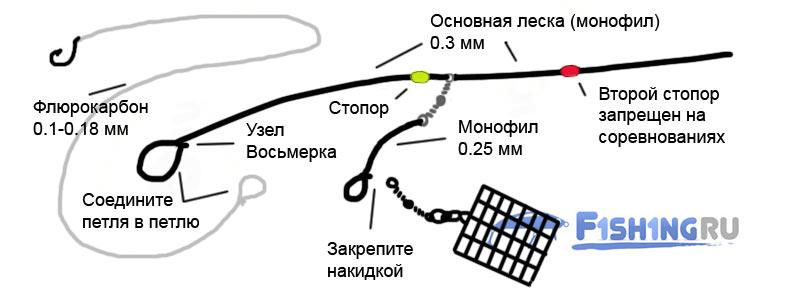
Spring
The spring is another popular equipment, used for both carp and crucian carp. For crucian carp there is even a special name for it - “crucian carp killer” .
The principle of operation is similar to a flat - such a feeder with bait is considered open. The difference is in the number of hooks and attachments on them. Such equipment is easy to manufacture and there are countless variations. However, such tackle is not considered sports, and is often prohibited, especially in the spring, primarily due to the number of hooks per tackle.
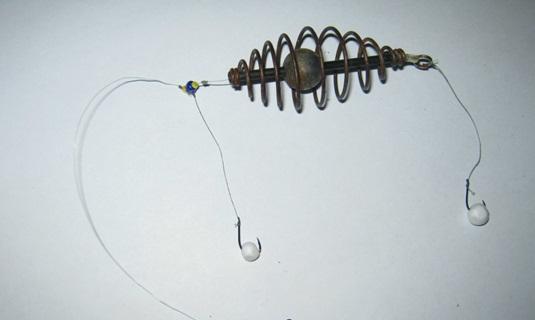
Option #1
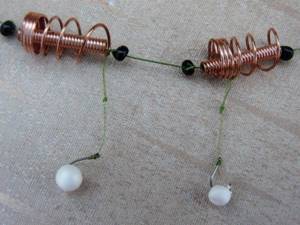
Option No. 2 Option for rigging a spring with the wrong hair
Fishing for carp in spring - video
Fishing with a float rod :
Carp fishing in cold water in early spring:
